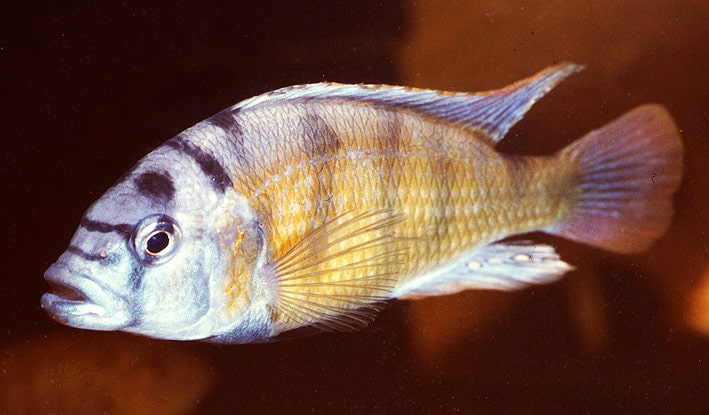Endemic to Lake Victoria, and formerly known as Haplochromis brownae, Astatotilapia brownaeis an insectivore occurring in shallow waters along the sandy shores. It grows to 12 cm and is one of the few species from Lake Victoria available in Australia. Others include Haplochromis nigricans, Haplochromis limax, Haplochromis burtoni and Haplochromis nyererei.

The aquarium to house A. brownae should be at least 90 cm long and sexing of the fish is relatively easy, even at the juvenile stage (males and females show colour at approx. 2″). Being able to do so, males and females can be selected and breeding colonies can be established easily. In terms of temperament, A. brownae is not very different from the average African cichlid. In the aquarium, males defend their territory, just like males of other African species, at times quite vigorously, especially whilst spawning. Of course during such time the fish are showing their best colour.
This species is a maternal mouthbrooder, which means: once spawning occurs, the eggs laid by the female are fertilised by the male, picked up into the mouth of the female and then incubated within the cavities of her mouth for a period of between 18 and 21 days. Upon free swimming, for the first few weeks the fry are released for food, from the mother’s mouth. This is known as post buccal care. In the case of Astatotilapia brownae this period lasts for an average of about 14 days. From then on the fry grow quite rapidly due to their eager appetite. In 10 weeks, your young A. brownae could be thriving at 4.5 cm. In each spawn, anything between 20 to 50 babies can be expected.
In the wild, aquatic insects make up most of the diet of these elegant fish. However, in captivity, they are relatively easy to feed: good quality dry food, brine shrimp, blackworms and frozen bloodworms are all readily accepted, however the latter two are best fed on an occasional basis only.
In summary, Astatotilapia brownae is a magnificent fish to display and spawn. In fact, it would probably be the most eye catching species of the Lake Victoria Haplochromines available. It is not terribly aggressive and will not outgrow its tank mates or your tank.
Leave a Reply